20 February 1778 Friday
Vases, Candelabra, Grave Stones, Sarcophagi. Tripods, Lamps and Ancient Ornaments volume I
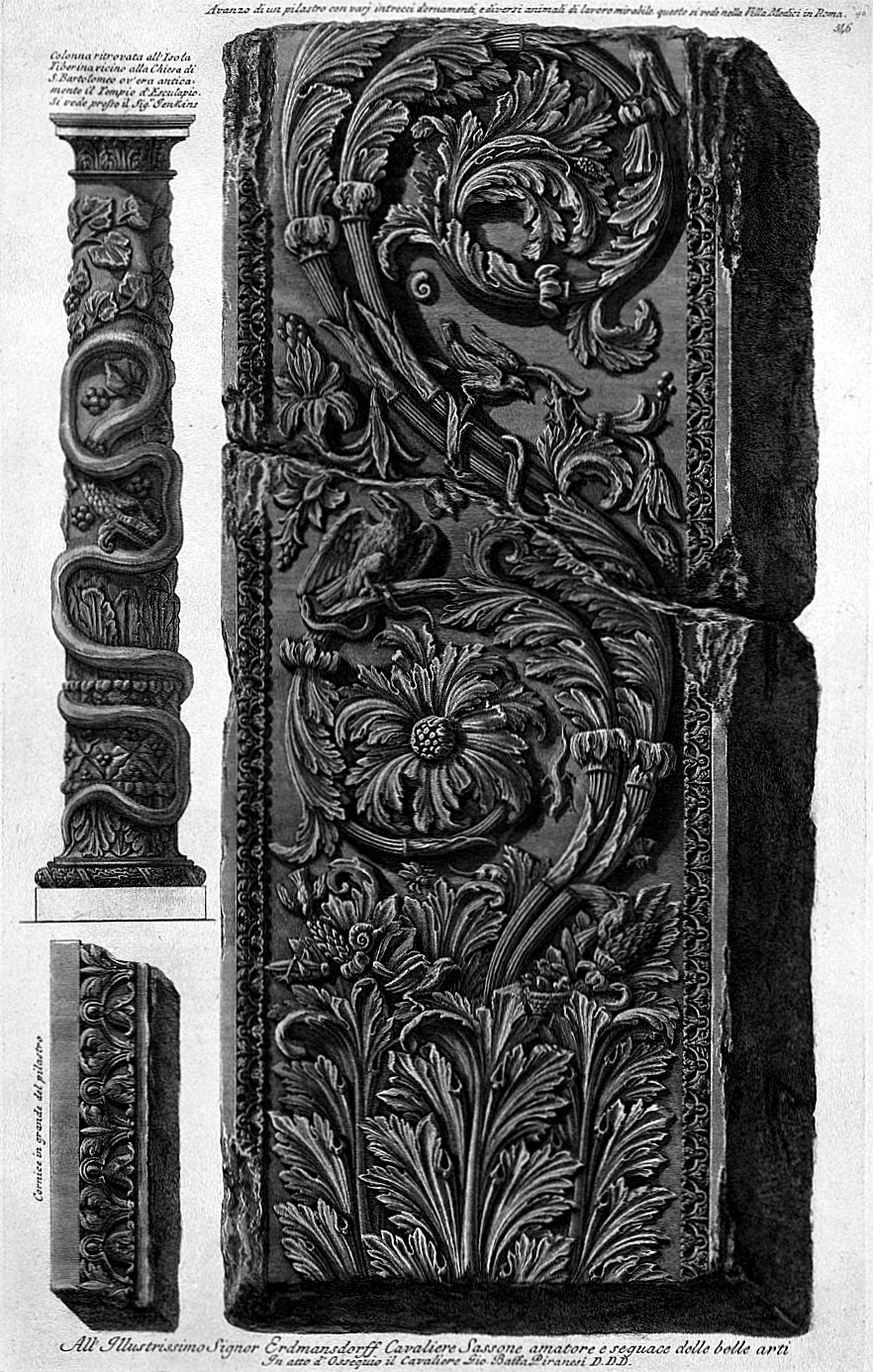
To the Most Illustrious Mr. Erdmansdorff Saxon Knight lover and follower of the fine arts
In deed of respect the Knight Gio. Batt(ist)a Piranesi D. D. D.
Remnant of a pillar with various interweaving of ornaments and various animals of admirable work, this one can be seen in the Villa Medici in Rome.
Column found on the Tiberian Island near the Church of S. Bartolomeo where the Temple of Aesculapius was once. It is seen at Mr. Jenkins.
Large frame of the pillar.
Cavalier Piranesi F.
20 February 1812 Thursday
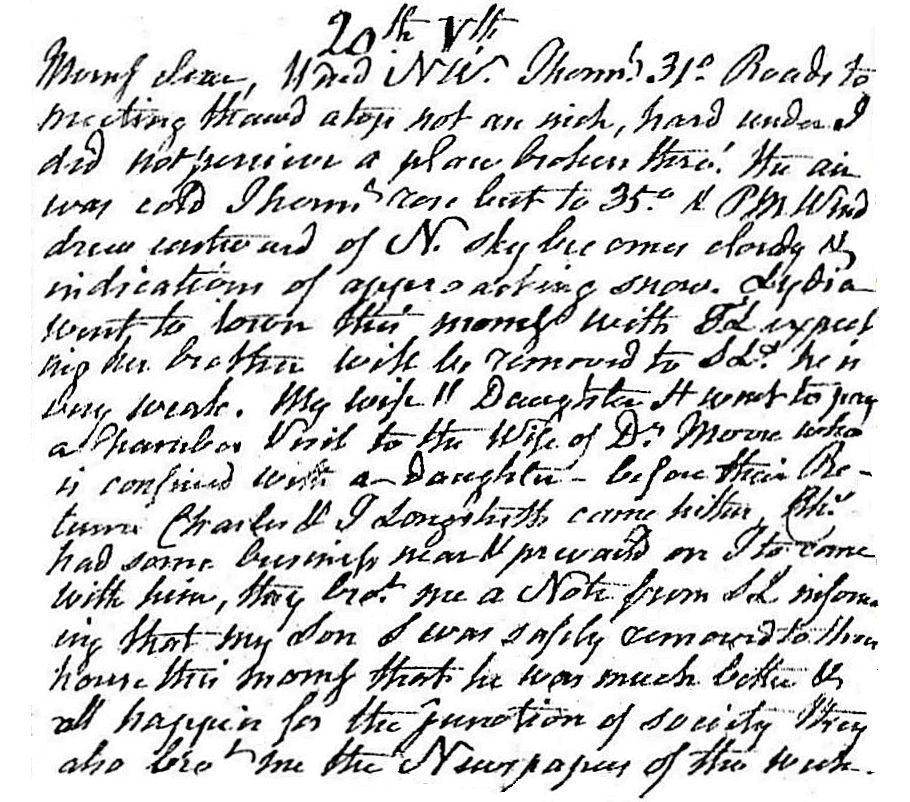
Morning clear, wind NW. Therm. 31°. Road to thawed atop not an inch, hard under. I did not perceive a place broken thru! The air cold. Therm. rose but to 35° and PM wind drew eastward of N. Sky becomes cloudy and indications of approaching snow. Lydia went to town this morning with TL expecting her brother will be removed to SL's. My wife and daughter H. went to pay a charitable[?] visit to the wife of Dr. Moore who is confined with a daughter. Before their return Charles and T. Longstreth came hither. Charles had some business near and prevailed on T, to come with him. They brought me a not from SL informing that my son S. was safely removed to their house this morning, That he was much better and all happens for the function[?] of society. They also brought me the newspapers of the week.
20 February 1998
in the mail, etc.
Hello Sue,
As promised, I have finally sent off 3 sets of photo copies:
Alan Plattus, "Passages into the City" in Ritual (Princeton Architectural Press, 1983).
Stanley Allen, "Piranesi's Campo Marzio: An Experimental Design" in Assemblage, 1989.
G. B. Piranesi "Thoughts on Architecture" in Oppositions (Spring 1984: 26).
I have made another discovery of yet another of my own mistakes regarding the Ichnographia, specifically to the area of the Bustum Hadriani. Hadrian's tomb is not in the Garden of Domitian but in the Garden of Domitia, the sister of Nero's father. Thus the twin circus to Hadrian's Circus is not the Circus of Domitian, but the Circus of Domitia, and therefore it is not a case of mislabeling and misplacement on Piranesi's part. The following is what Piranesi notes in the Catalogo of Il Campo Marzio:
Circo Apollinare di Domizia «Procopio nel lib. della guerra Gothica.» Furono dissotterrati diciotto anni fa li rovine di questo circo nel sito, ove l'abbiam delineato, ed ove son state dinotate dal Nolli nella sua pianta di Roma moderna. Di esse parla il Fulvio, ove dice: «Vi resta per anco fuori di porta Castello, in quelle vigne vicine, non lungi dalla mole Adriana una piccolo forma di un circo di pietra nera e dura quasi affatto rovinato.»
[Circus Apollinaris of Domitia «Procopius in lib. of the Gothic War." The ruins of this circus were unearthed eighteen years ago on the site where we have outlined it, and where they have been indicated by Nolli in his map of modern Rome. Fulvio speaks of them, where he says: "There still remains outside Porta Castello, in those nearby vineyards, not far from the Mole Adriana, a small form of a circus of black stone and hard almost completely ruined."]
I see a reference to Nolli, the Gothic Wars, to Hadrian, and to the Castello. I think we are both interested in how this translates. I see it pertaining especially to your reconstruction paper and to the issue of Piranesi's archeology in general.
If nothing else, Piranesi certainly keeps us "digging"! Hope you enjoy the articles.
Steve
20 February 2000
tafuri
nic:
You wrote, "In the end, I never got past Tafuri; regardless of how he tries to recapture the value in the implicit recognition of the futility in the architectural project, this might be a personal salve for me as I try, but if I am establishing and sustaining agency, they abandonment of the architectural project is my only recourse."
Since I have never been taught Tafuri, and only read some of his texts (but not entire books), what is it that you "never got past"? Is it a kind of disenchantment?
I ask because I have found that Tafuri is more or less completely flawed in his interpretations of Piranesi's Campo Marzio (in The Sphere and The Labyrinth). Moreover, I've just recently become award of Tafuri's stance regarding historical criticism versus operative criticism, and it seems to me that with regard to Piranesi's Campo Marzio, Tafuri is just as guilty of utilizing operative criticism as opposed to historical criticism (which I understand Tafuri recognizes as a "better" mode of criticism/theorizing).
I am not necessarily someone that is anti-Tafuri, in fact, it was Tafuri's texts regarding the Campo Marzio that were for a long time the only texts I could readily find on the Campo Marzio as it might relate to architecture, but as I further researched Piranesi's Campo Marzio plan, and other texts (e.g., Fasolo's 1956 text, which too is full of literal mistakes, and which seems to have also informed Tafuri), I began to see where Tafuri makes many mistaken interpretations as well. Moreover, if Tafuri is wrong about the Campo Marzio, of which his interpretations form the foundation for his Sphere and Labyrinth text/argument, is it possible that a great deal of the argument may be flawed?
Basically, I'm asking if you might be interested in (privately) discussing Tafuri via email, especially with regard to the Campo Marzio.
Steve
20 February 2002
Re: paper architectures
B.'s wondering about text (on paper, etc.) architectures makes me want to relate something I found out about the architecture of ancient Rome (particularly the Campo Marzio). An index at the end of Piranesi's Il Campo Marzio publication entitled "Catalogo" lists all the buildings known to have existed in the ancient Campus Martius, and the name of each building is accompanied by the literary (i.e., textual) references within ancient writings where mention of the respective buildings occurs. What is interesting is that eventually I learned (via long assimilation, if not also osmosis) that the only 'real' evidence left of many ancient Roman buildings is their mention in texts. Even within today's archaeology there are no physical remains for lots of 'known' ancient Roman buildings. Of course, there is apparently a lot still buried under later buildings, but one can still (now) think of much of today's 'paper architectures' as the inverse reflection (in a 'quondam' mirror?) of much of ancient Rome's architectures.
20 February 2019
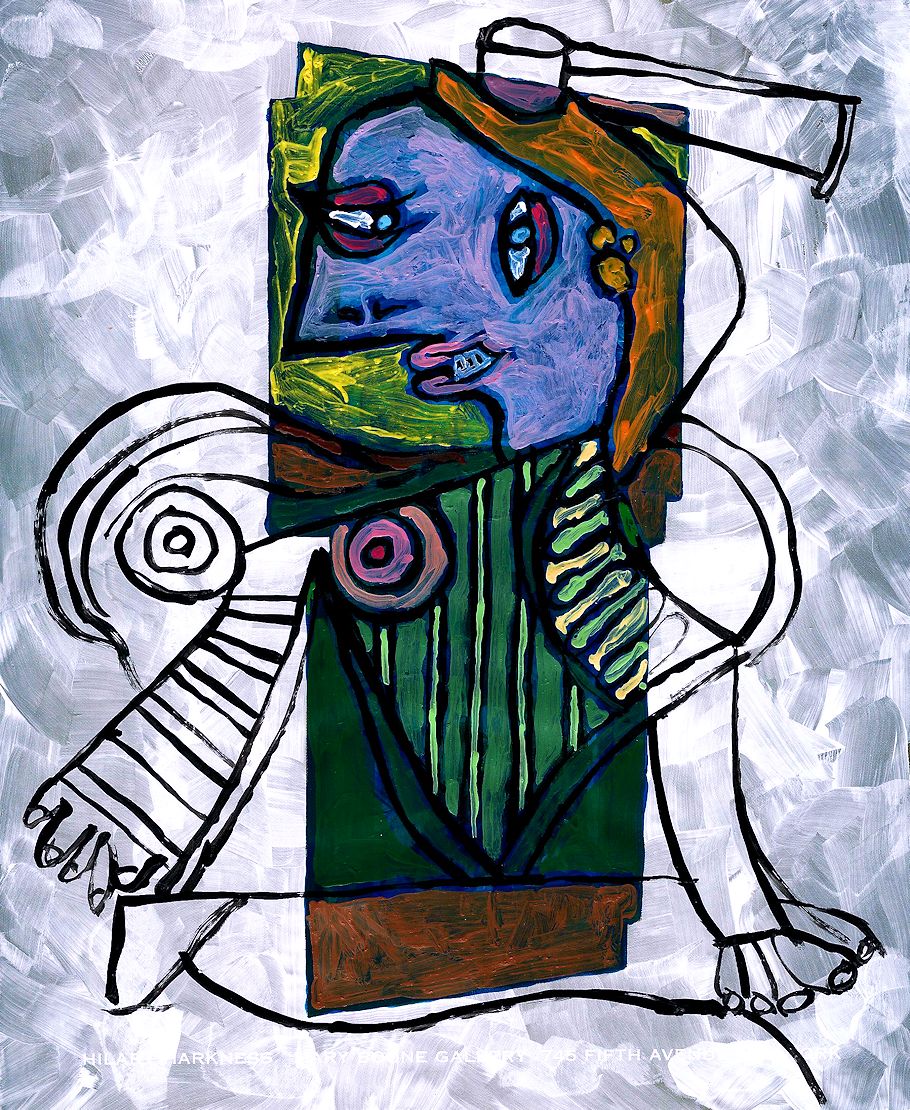
Mary Boone's 180 hours of community service hour 12
20 February 2021

20 February 2022
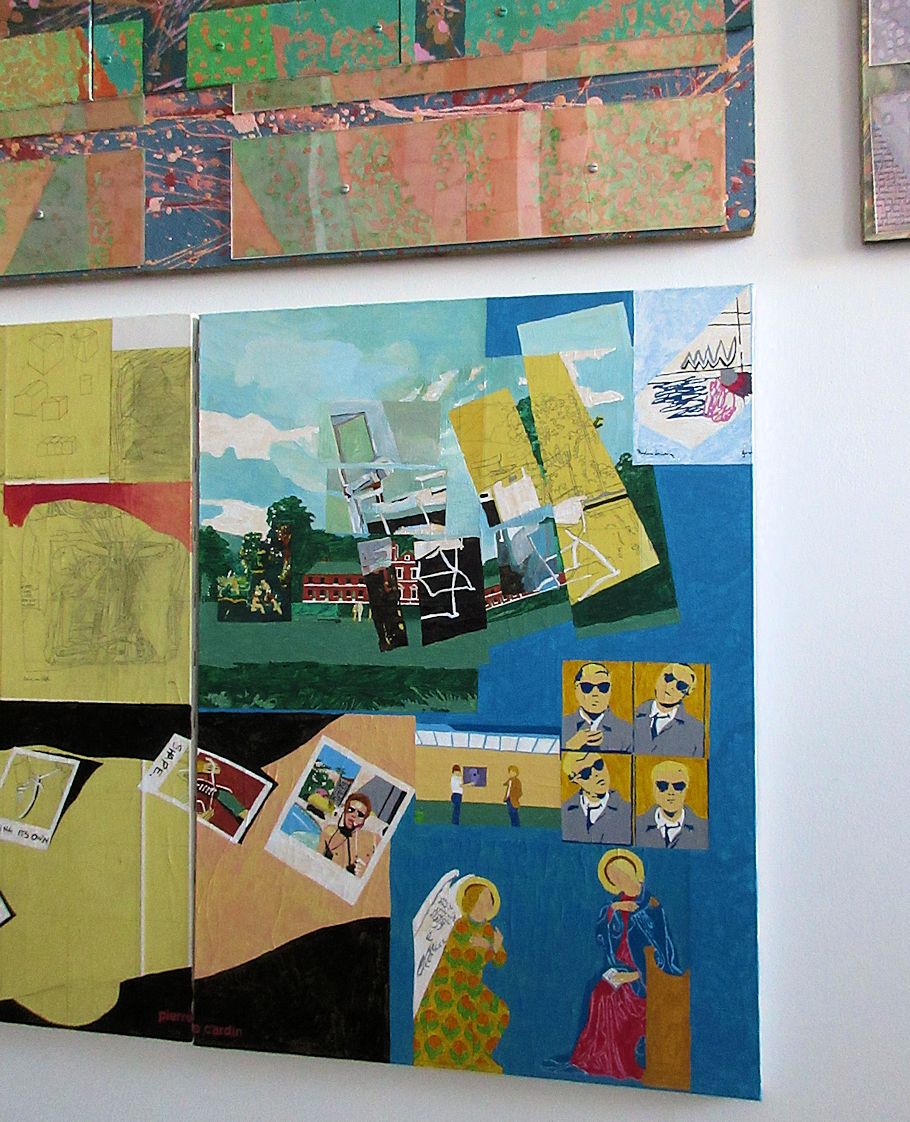 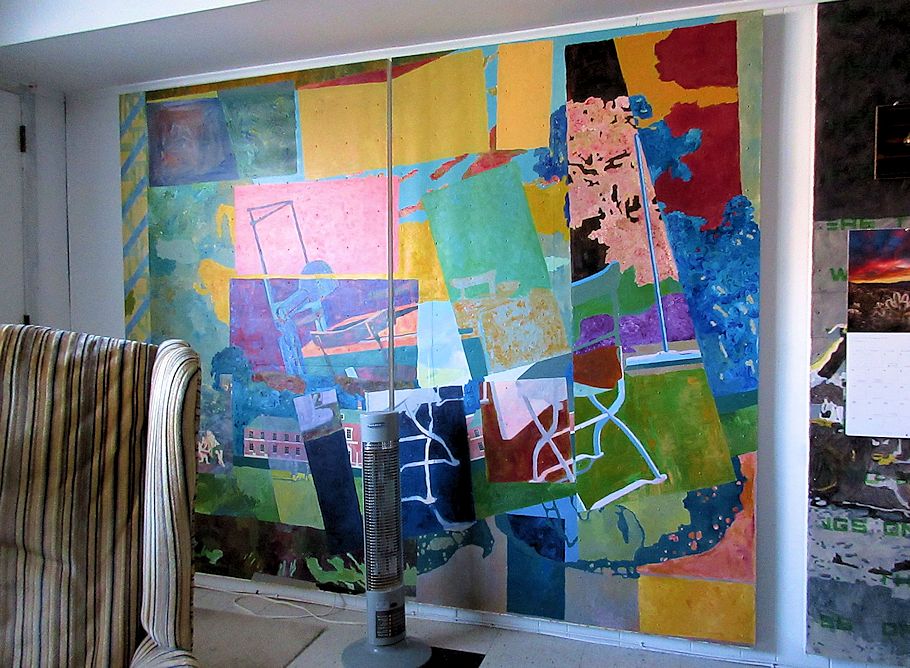
20 February 2023 Monday
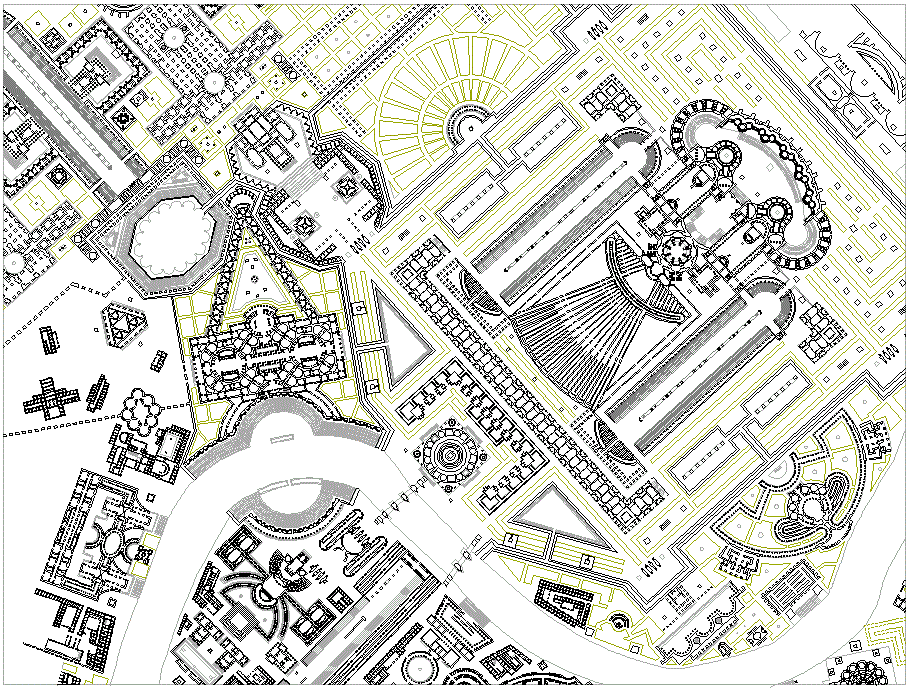
Ichnographia Campus Martius Tab. VI first state
Raccolta de' tempj antichi Parti I
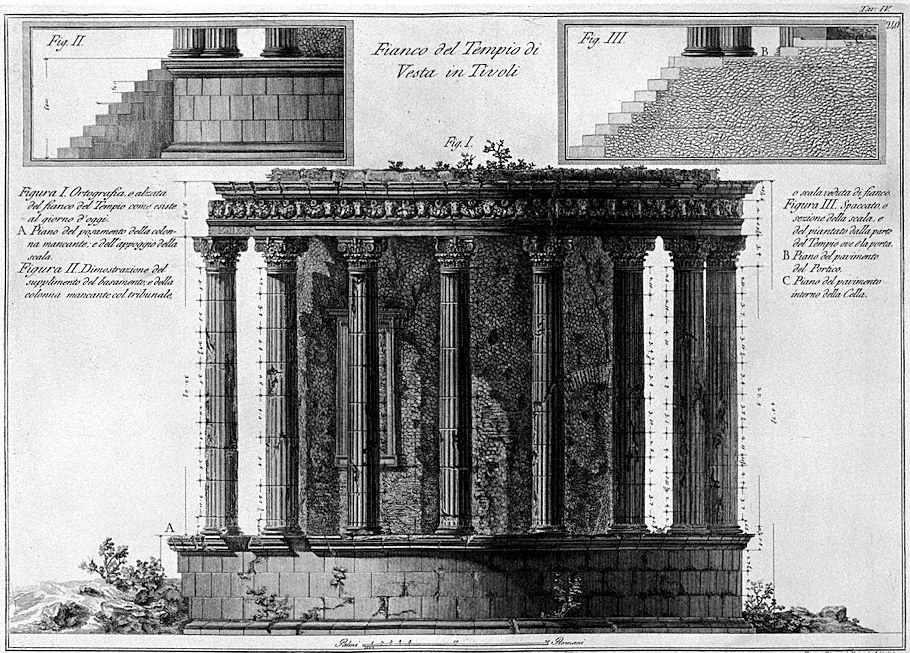
Side of the Temple of Vesta in Tivoli.
Figure I. Orthography, or elevation of the side of the Temple as it exists today.
A Plan of the installation of the missing column ; and the support of the ladder.
Figure II. Demonstration of stand supplement; and of the missing column with the tribunal, or staircase seen alongside.
Figure III. Cutaway, or section of the staircase, and of the floor plan on the side of the Temple where the door is.
B Plan of the floor of the Portico.
C Internal floor plan of the Cella.
Franc. Piranesi drew and engraved 1780
|